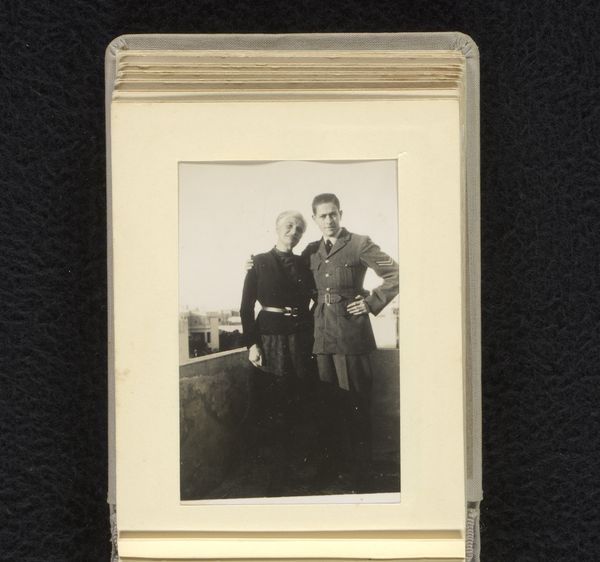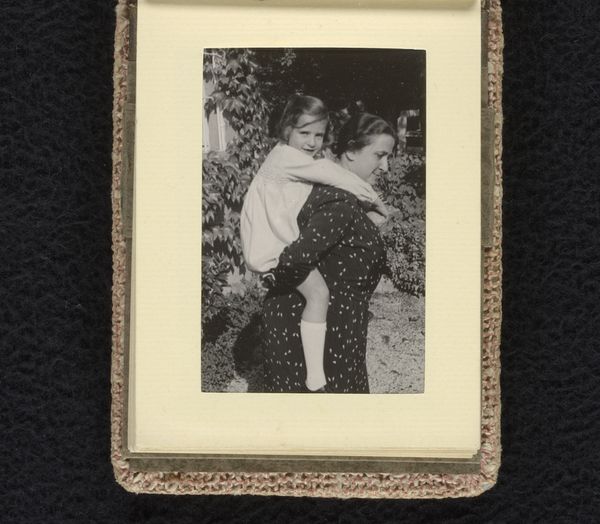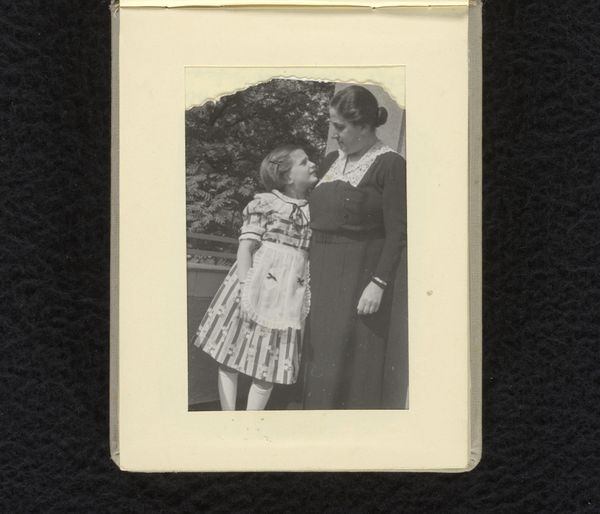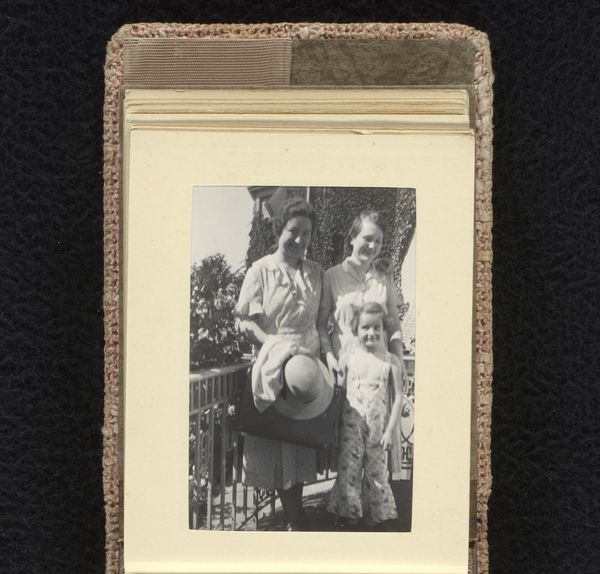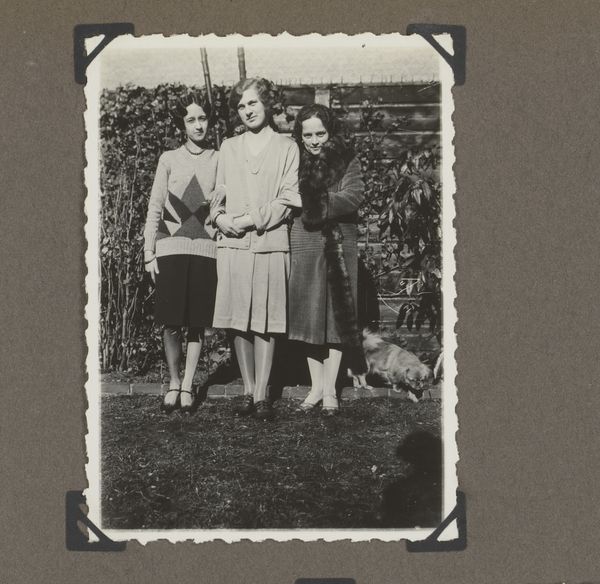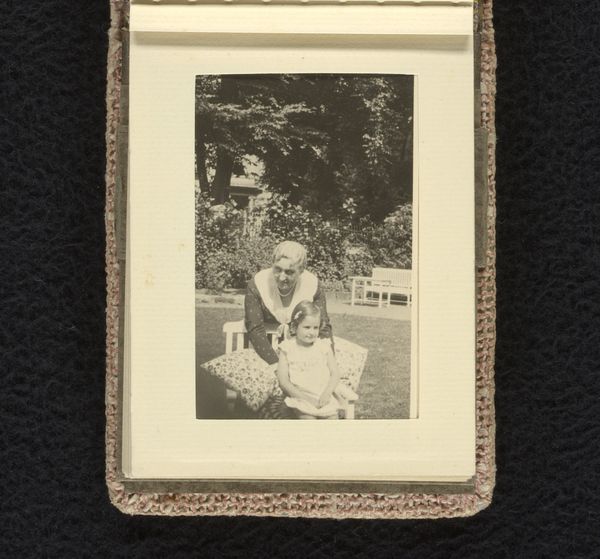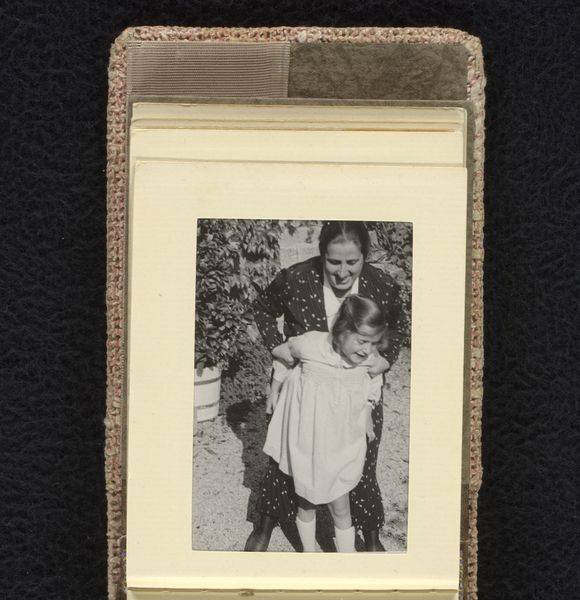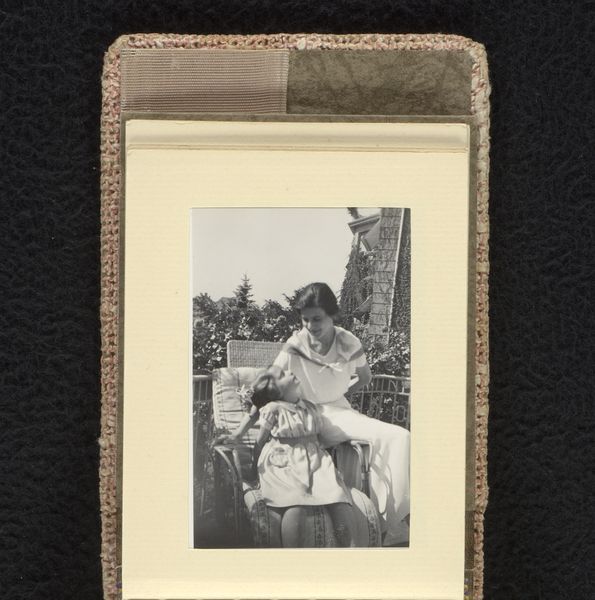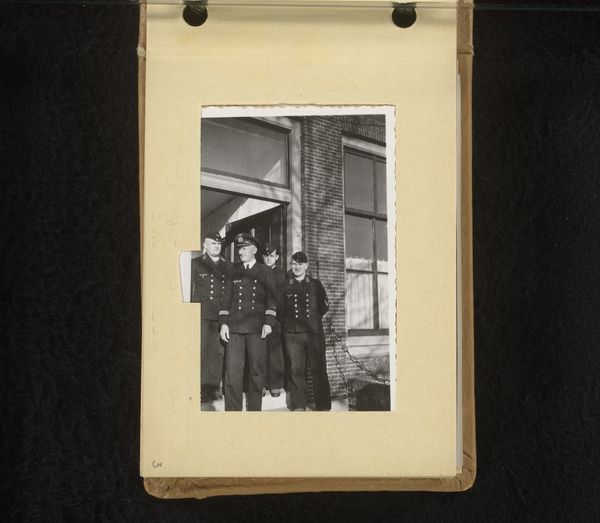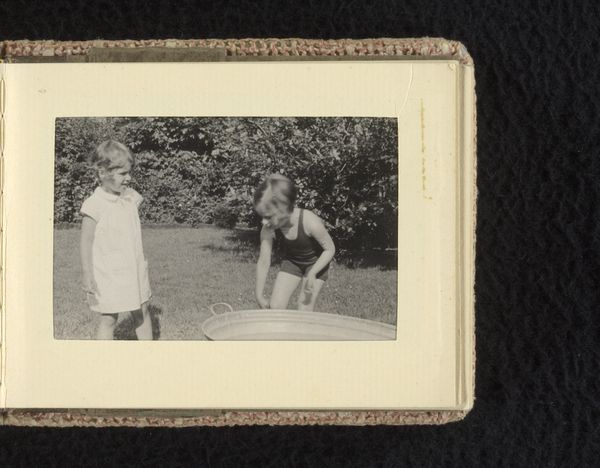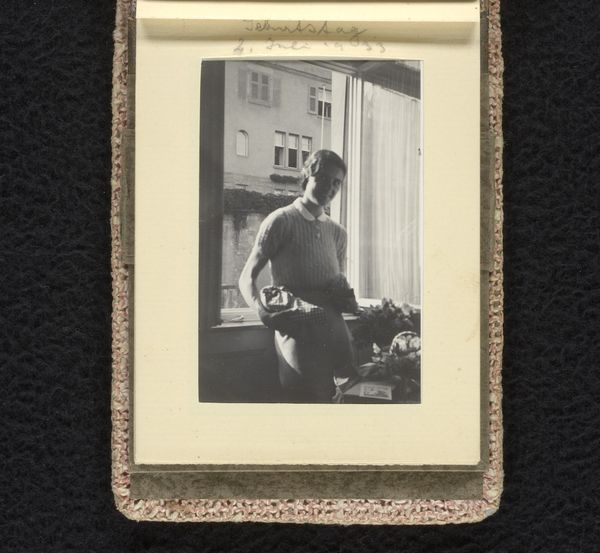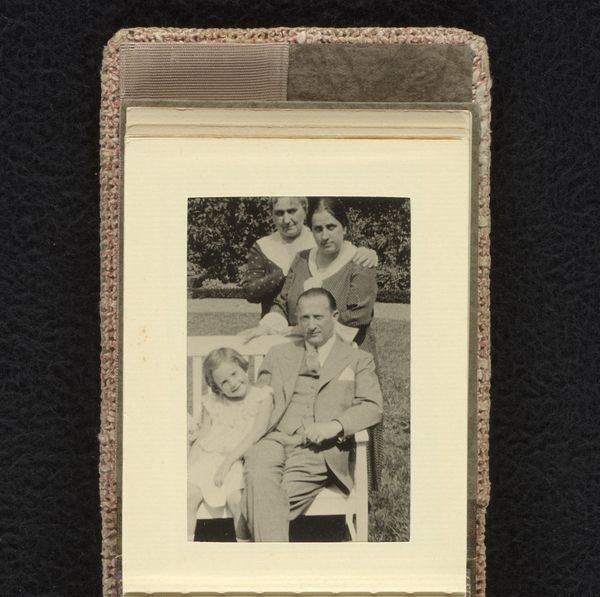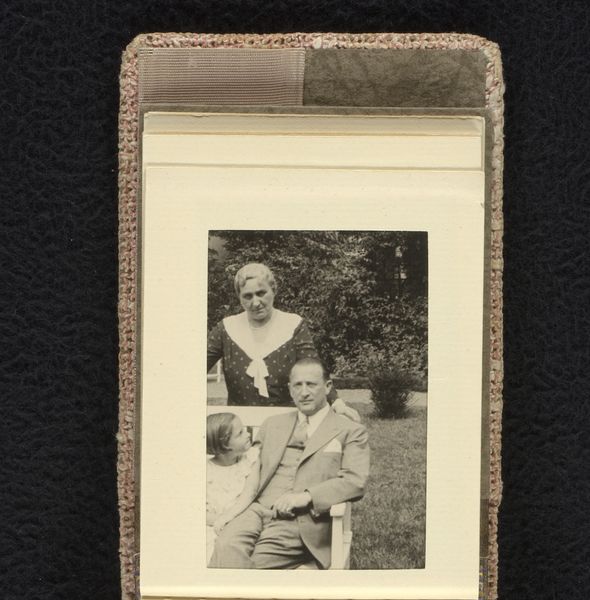
Isabel Wachenheimer in de tuin met haar moeder Else Wachenheimer-Moos, 1941, Doorn 1941
0:00
0:00
photography
#
portrait
#
street-photography
#
photography
#
group-portraits
#
realism
Dimensions: height 93 mm, width 65 mm, height 81 mm, width 107 mm
Copyright: Rijks Museum: Open Domain
Curator: This touching photograph is titled "Isabel Wachenheimer in de tuin met haar moeder Else Wachenheimer-Moos, 1941, Doorn.” Editor: It has a haunting quality, doesn’t it? A snapshot of normalcy captured against, I suspect, anything but. The figures are framed centrally, almost frozen in their shared space. Curator: Precisely. The stark contrasts created by the black and white tones serve to emphasize the subjects' postures, as the image is constructed through subtle modulations of grayscale values and formal elements, achieving a balanced visual narrative. Editor: Yes, the light itself feels meaningful, hitting the daughter just so, almost as if singling her out for posterity. The pose too -- the mother’s arm over the daughter’s shoulder. We are told a story about the strength of kinship. What I read are both connection and protection in a gesture. Curator: This simple gesture amplifies the narrative suggested by the artist through formal arrangement, wherein we see clear symbolic references of domesticity threatened within the historical setting of wartime. Editor: Indeed. Knowing the date, 1941, casts a heavy shadow. This isn't just a portrait; it becomes a symbol of a family clinging to one another amid turmoil, and of cultural and psychological struggle. What, perhaps, this embrace meant both within and without. The Wachenheimer family history, revealed in one visual field. Curator: Well observed. Its stark simplicity offers viewers direct, uncomplicated, visual access that prompts reflection about individual experience as expressed via collective suffering during World War Two. Editor: This image becomes an artifact invested with symbolic potential. As an artifact it is not a singular narrative; it can be read as symbolic record for this single family's experience, and it invites interpretation, adding layers of historical memory over time. It's a haunting testament. Curator: Concurred. Such subtle artistry serves as a stark reminder of both art’s inherent power to document history and human beings’ enduring tenacity.
Comments
No comments
Be the first to comment and join the conversation on the ultimate creative platform.
